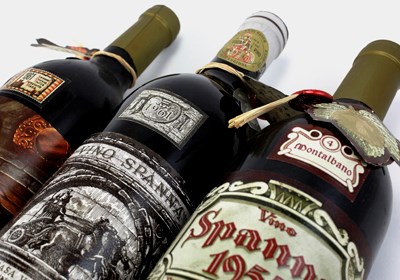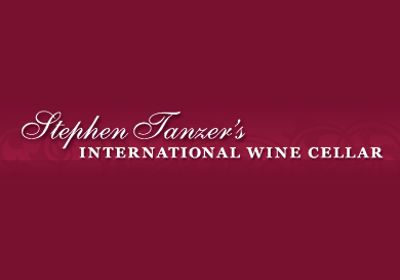
Which site would you like to visit?
By clicking the retail or wholesale site button and/or using rarewineco.com you are choosing to accept our use of cookies to provide you the best possible web experience.
On a 1950 visit to Madeira, Sir Winston Churchill was honored by the island's British community with a dinner party. As a special tribute, his hosts opened a rare 1792 Vintage Madeira bottled in 1840.
When served in 1950, the wine was 158 years old, but in fine condition, still boasting Madeira’s trademark rich, sweet, velvety taste and roomfilling aromas of butterscotch, cocoa and coffee. Sir Winston insisted on serving the guests himself, asking each in turn, "Do you realize that when this wine was vintaged Marie Antoinette was alive?"
The longevity of Madeira wine earns it a special place in the realm of old wine. What other wine requires over a half century to mature? And what other wine, when a century old, still benefits from several hours of breathing and can stand up to weeks in a decanter, without losing its complexity or its richness? And how many wines can live for two centuries and still offer not only the pleasure of their antiquity, but also the enjoyment of drinking?
“I know no wine of its class that can beat Madeira when at its best ... In fact, I think Madeira and Burgundy carry combined intensity and complexity of vinous delights further than any other wines. There is possibly something of the unlawful about their rapture...”
- George Saintsbury, Notes on a Cellarbook (1920)
All Madeira wines—whether from a single vintage or a blend of harvests—are produced on a spectacular volcanic island of the same name which surges from the sea at a point 360 miles west of Morocco. The history of Madeira’s wine is nearly as old is that of the island. The island was first settled by Europeans in 1419, and by 1455 a visitor from Venice wrote that Madeira’s vineyards were the world's most beautiful. Within a century, the wine from these vineyards was well established in markets throughout Europe and by the 1600's it had become the most popular wine in Britain’s North American colonies.
The popularity of Madeira in the American colonies got a huge boost in the 1660s when the British crown banned the importation of products made or grown in Europe, unless shipped on British vessels from British ports. Products from Madeira were specifically exempted. British merchants in Madeira took advantage of this by establishing close ties with merchants in Boston, New York, Philadelphia, Baltimore, Charleston, Savannah and New Orleans. A steady trade developed in which wine from Madeira was traded for such American products as indigo, corn and cotton. This trade continued until the Civil War, except when politics and war occasionally interfered.
For two centuries, Madeira wine was the wine of choice for most affluent Americans. Any public event—from the signing of the Constitution and Declaration of Independence to George Washington’s inauguration—was celebrated with countless toasts of fine Madeira. Wealthy families from Boston to New Orleans established extensive collections of Madeiras. Madeira became high fashion, and "Madeira parties" (forerunner of today’s winetasting) became major social events.
Madeira is produced from grapes grown on terraces cut into the island's steep mountainsides. Like Port, Madeira is a "fortified" wine to which brandy has been added. But unlike other fortified wines, Madeira is always subjected to warmth.
Inexpensive Madeira wine is heated in special vats called estufas. But finer Madeiras, including Vintage Madeiras, are aged slowly by the Canteiro method.
In the Canteiro method, barrels of Madeira are left for years in the shippers’ lodges to age naturally, experiencing the wide temperature swings of the seasons. For a wine to be labeled as a Vintage Madeira—or Frasqueira, which is the Portuguese equivalent—the wine has to have remained in barrel for a minimum of 20 years before bottling.
Prior to current millennium, any Madeira carrying a date on the bottle was either a Vintage Madeira or a Solera. But it is now possible to release the Madeira of a single harvest before the requisite 20 years in barrel. Such wines are labeled “Harvest” or “Colheita,” and must be a minimum of five years old when they’re sold.
While the majority of Madeiras are blends of vintages and grape varieties, it is the Vintage Madeiras, and the now-vanishing Soleras, that are Madeira’s claim to greatness. Vintage and Solera Madeiras are not simply a selection of the best wines from the best years, they are made from particular “noble” grape varieties after which the wines are named. These names—Malmsey, Bual, Verdelho, Sercial—not only describe a grape variety; they also describe a style, with Malmsey being the sweetest and richest (and therefore the most like Vintage Port) and Sercial being the lightest and the driest.
There are other grape varieties whose names you may stumble across on old bottles of Madeira. Terrantez and Bastardo, in particular, are grapes that were widely grown up to the late 1800’s and whose old wines can still be found on occasion. The virtual extinction of Terrantez and Bastardo grapevines in the late 1800’s coincided with the decline of the Madeira trade and resulted from the same causes: two diseases of the vine, Oidium and Phylloxera, both of which also struck the vineyards of Europe, but in Madeira caused much greater, and more lasting, destruction.
The Oidium crisis began in 1852 and lasted about a decade; during this time some 90 percent of the island’s vines were destroyed by powdery mildew, and the number of firms producing wine decreased by over 75 percent. There was a brief period of replanting and rebuilding in the 1860’s, but then Phylloxera struck in 1872, reducing the island’s vine acreage to about 1,000 by the early 1880’s.
The Phylloxera crisis, too, passed, and by the turn of the century production had been restored throughout the island, albeit at somewhat lower levels. But the costs had been heavy. Madeira had largely lost its traditional markets—America, England and the British East Indian colonies. Relatively less of the classic grape varieties were now grown, as they gave way to more prolific, but less distinguished, varieties. And, of course, stocks of older wines had been largely depleted, after a half century during which little young wine was being produced.
Today, the world’s supply of old Vintage Madeira is negligible. However, those few examples that have survived from the 19th and early 20th centuries are among the world’s most majestic wines, possessing a richness and grandeur shared by only a few wines.
And their long lives have made them absolutely unique in the world of wine. Most wines are dead and gone at age 100; and at best they are barely drinkable. But after a century, a Madeira can be just reaching its prime, possessing the depth of great age, but also the vigor of youth.
“The Rare Wine Co. is today the best American source for older Madeiras.”
- Steve Tanzer, International Wine Cellars
As they have grown in rarity, and the sources of supply diminish, the price of Madeira on the world market has skyrocketed. Though many of the older wines arguably are worth whatever you may be asked to pay, the rising tide—combined with Madeira’s mystique—has also raised the prices of mediocrities to the levels of the greats.
We are proud of the role we have played in sorting through which are the truly classic Madeiras, and in preserving their availability and keeping them affordable





New discoveries, rare bottles of extraordinary provenance, limited time offers delivered to your inbox weekly. Be the first to know.
Please Wait
Adding to Cart.
...Loading...


By clicking the retail or wholesale site button and/or using rarewineco.com you are choosing to accept our use of cookies to provide you the best possible web experience.

